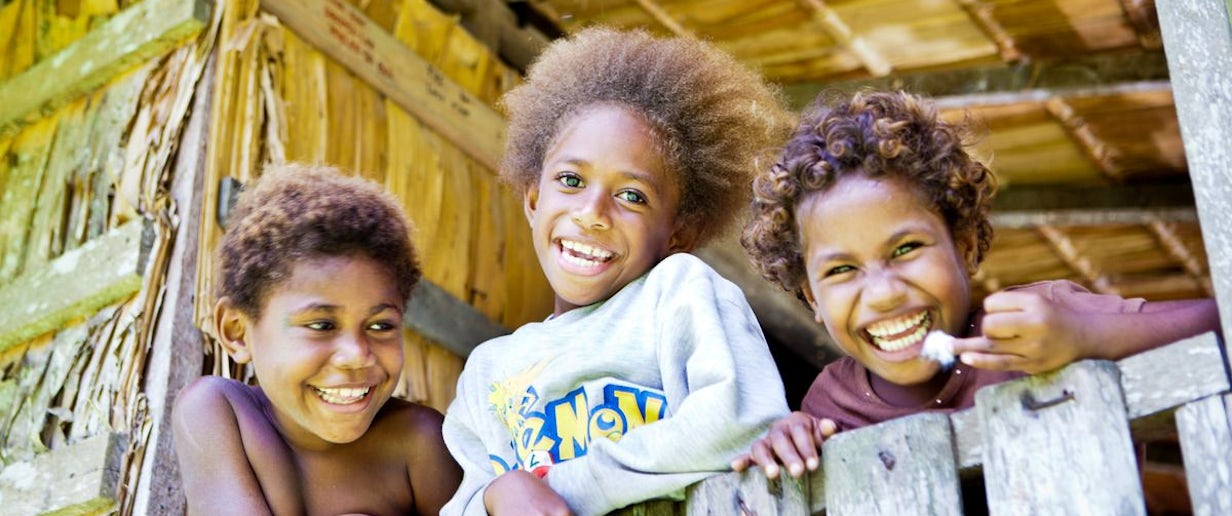Malaria Elimination in Melanesia and Timor-Leste

MEMTI at a glance
In order to incentivize acceleration of efforts toward malaria elimination, the Global Fund has launched the Initiative for Malaria Elimination in Melanesia and Timor-Leste. 25 million USD additional to Global Fund allocations have been set aside to complement funding from other sources, domestic and external, in accordance with existing commitments, and to catalyze further contributions to fully meet the needs of malaria elimination and prevention of reintroduction in the coming years.
Background
The epidemiology of malaria in Papua New Guinea, Timor-Leste, Solomon Islands and Vanuatu has fundamental characteristics in common. At the same time macro-economic and political considerations as well as geographical factors of the Melanesian islands, together with constraints linked to the capacity of their health systems present specific challenges. In 2018, Papua New Guinea, Solomon Islands and Vanuatu committed to eliminate Malaria by 2030, whereas Timor-Leste’s national strategy aims at elimination by 2022. Today we have an opportunity to make a dent in the fight for the eradication of Malaria by securing sources of financing that go way beyond the traditional malaria-specific grants and take into consideration the necessary investments in health systems to sustain the gains beyond certification date.
Principles
In order to access the funding, countries are expected to develop fully costed malaria elimination strategies, and for the next three to five years, identify and secure the necessary sources of funding to implement the corresponding work-plan and achieve the anticipated results. The sources of funding will depend on the context of each country and can include government budgets, loan or grants from development financing institutions, Global Fund allocations, MEMTI funds and contributions from other donors. By being contingent to a technically sound, comprehensive and fully funded strategy for the next three years, MEMTI is an innovative mechanism that can catalyze programmatic ambition and increases in financing, including in health systems to strengthen sustainability of achievements and prevent reintroduction of malaria.
How to proceed
To access this MEMTI funding, the process is not going to be different from the one to access GF allocations
- Each country will apply with a Funding Request based on its NSP to access simultaneously the allocation and the MEMTI funding
- GF funding from allocations and from MEMTI will constitute the country malaria grant and will contribute to finance the NSP
The need to have a financial strategy aligned with the malaria elimination strategy may require several iterations of the malaria strategy between the technical experts and the decision-makers on the financing, but it is an opportunity to set up now a realistic plan where all stakeholders will be able to track progress. In practice, at least for the next 3 years, the activities in the malaria work plan will have to be mapped to available sources of funding in order to cover the all the needs of the elimination plan. Government budgets may need to be adjusted accordingly and the same applies to existing loans from development banks or loans in the negotiation pipeline.
Access the MEMTI process flowchart HERE.
What help is available
A landscape analysis has been commissioned to the University of California San Francisco/Malaria Elimination Initiative group (UCSF/MEI) in collaboration with the WHO WPRO office and the Nossal Institute in Australia. It offers several intervention scenarios for which the evolution of the disease and the associated costs are modelled, while providing an assessment of underlying health systems and gaps. It is intended to inform technical discussions and help define strategic choices in the process of updating National Strategic Plans (NSP).
Subsequently, a funding mapping study has been undertaken by the Swiss Tropical Public Health Institute and Ian Anderson Economics consulting. It will present a menu of options to map the programmatic interventions stemming from the landscape analysis into prospective sources of available funding. Its aim is to support countries decision on financial strategy to prioritize and fund the malaria-specific and health system-related interventions included in the NSP and define the resulting funding requests to the Global Fund.
WHO, with financial support from partners (in particular DFAT), is coordinating all technical assistance to countries supporting the process of NSP updates and the preparation of funding requests to the Global Fund.
MEMTI Partners
A number of diverse partners with different levels of engagement but with a common interest in leveraging efforts towards malaria elimination have come together in the MEMTI initiative to technical expertise, implementation capacity, funding and political drive in a unique endeavor to shrink the malaria map.
- Government of PNG
- Government of Solomon Islands
- Government of Timor-Leste
- Government of Vanuatu
- World Health Organization
- Australia Department of Foreign Affairs and Trade
- Asia Pacific Leaders Malaria Alliance
- The Global Fund
- Asian Development Bank
- World Bank
- Rotarians Against Malaria
Additional Information
Download the Frequently Asked Questions document HERE.
For more information, please contact:
Gonzalo Penacoba
Sustainability and Transition specialist
Mobile: +41 79 294 2090
Email: [email protected]


